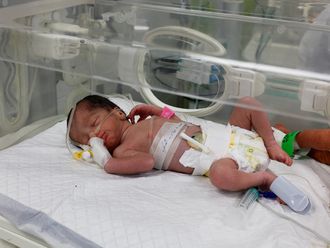
Zaafarana: Egypt's antiquities chief yesterday unveiled the completion of an 8-year, $14.5 million (Dh53.2 million) restoration of the world's oldest Christian monastery, touting it as a sign of Christian-Muslim coexistence.
The announcement at the 1,600-year-old St Anthony's Monastery came a month after Egypt's worst incident of sectarian violence in over a decade, when a shooting on a church on Orthodox Christmas Eve killed seven people.
The attack raised heavy criticism of the Egyptian government abroad and at home, by critics who say it has not done enough to address tensions between the country's Muslim majority and its Christian population, estimated at 10 per cent of the 79 million population.
Friction
The government insists the shooting was a purely criminal act with no sectarian motives, and officials persistently deny the existence of significant Muslim-Christian frictions.
Top archaeologist Zahi Hawass took the opportunity to reiterate that stance as he showed journalists the work at St Anthony's, an ancient compound at the foot of the desert mountains near Egypt's Red Sea coast.
"The announcement we are making today shows to the world how we are keen to restore the monuments of our past, whether Coptic, Jewish or Muslim," he said, referring to the dominant Orthodox Coptic Christian sect in Egypt.
"The incident in Upper Egypt can happen between two brothers," said Hawass when asked if there was any correction between the December 6 shooting and the timing of his announcement at the monastery.
"I want everyone to forget this incident."
Hawass noted that the restoration work at the monastery was carried out by Muslims. St Anthony, widely revered as the founder of Christian monasticism, settled in this remote mountainous area at the end of the 3rd century to live in isolation.
Upon his death, his followers built the monastery, which was completed around AD 350 and remains in use to this day.












